 |
 |
 |
| |
Long-term liver morbidity and mortality after HCV elimination by direct-acting antivirals in patients with chronic hepatitis C: results from a large-scale, multicenter cohort study
HCV Cure With DAAs Improves Survival Regardless of HCC
|
| |
| |
EASL Congress 2024, June 5-8, 2004, Milan
Mark Mascolini
Direct-acting antiviral (DAA) cure of HCV infection improved liver-related and all-cause mortality through 8 years in 3024 people in Japan with chronic HCV infection [1]. This improvement held true in people who had a history of hepatocellular carcinoma (HCC), but survival rates in those with prior HCC lagged rates in those who never had HCC.
Eiichi Ogawa (Kyushu University Hospital) and colleagues throughout Japan conducted this multicenter retrospective cohort study to analyze liver outcomes for 5 or more years in adults with chronic HCV infection who attained a sustained virologic response (SVR) with oral DAA therapy between 2014 and 2023. They excluded people in whom DAAs failed and people with decompensated cirrhosis, active malignancy, history of transplantation, or coinfection with HBV or HIV. The researchers fixed the index date at the end of DAA therapy and tracked participants for a median 6.5 years.
The 3024 cohort members averaged 64.8 years in age, and 333 had a history of HCC; among 2689 people without HCC, 2130 never had cirrhosis and 559 had compensated cirrhosis. People with an HCC history, people without HCC and without cirrhosis, and people without HCC but with cirrhosis averaged 73.2, 62.7, and 67.8 years in age. Respective proportions of men were 54.1%, 44.1%, and 43.2%. Median body mass index in these three groups stood at 22.2, 22.5, and 23.1 kg/m2. Respective proportions with diabetes were 33.6%, 16.1%, and 22.4%.
Through 96 weeks of follow-up, HCC recurrence proved significantly more frequent in the group with an HCC history (about 60%) than new HCC did in people with compensated cirrhosis (about 20%) and people who never had cirrhosis (below 10%) (P < 0.001). HCC recurrence plateaued at about 60% in almost 5 years. No cohort member under age 50 got an HCC diagnosis during follow-up, while people 75 and older had an annual HCC rate above 1.5%.
The crude rate for HCC emergence rose from 5.62 per 1000 person-years (p-y) in 2131 people with no history of HCC and no cirrhosis to 29.04 per 1000 p-y in people with no history of HCC but with compensated cirrhosis then vaulted to 168.68 per 1000 p-y in people with previous HCC. Among men in those three groups, age-standardized HCC diagnosis per 1000 p-y was 7.52, 32.96, and 189.92. In women those age-standardized rates were 4.16, 26.98, and 200.74, with only that last rate (in the prior HCC group) higher in women than in men.
In people without cirrhosis, two demographic factors and one lab measure independently raised the risk of HCC diagnosis: older age, male sex (adjusted hazard ratio [aHR] 2.44, 95% confidence interval (CI) 1.45 to 4.11, P < 0.001) and alpha-fetoprotein at or above 7.0 at the end of DAA therapy (aHR 5.59, 95% CI 3.20 to 9.77, P < 0.001). (Among other uses, alpha-fetoprotein can signal liver disorders or some cancers in adults.) Body mass index, diabetes, and alanine aminotransferase (ALT) at the end of treatment did not independently predict HCC in this analysis.
Eight-year survival stood above 90% in people without an HCC history compared with about 70% in people who had had HCC (P < 0.001). In the group with an HCC history at baseline, 8-year survival measured 75% in those who had curative treatment for HCC versus 50% in those who had only palliative treatment (P < 0.001).
Age-standardized mortality per 1000 p-y after HCV cure measured 5.24 (95% CI 2.26 to 10.68) in men without cirrhosis, 13.41 (95% CI 4.28 to 30.01) in men with compensated cirrhosis, and 65.18 (95% CI 45.54 to 126.33) in men with a history of HCC. Among women in those three groups, age-standardized mortality rose from 2.51 (95% CI 1.05 to 5.61) to 7.12 (95% CI 3.34 to 16.98) to 49.38 (95% CI 27.52 to 86.86).
Leading causes of death after HCV cure in people without cirrhosis were similar to those in Japan's general population: nonliver cancer, circulatory disease, and infectious disease. Among people with compensated cirrhosis, the main causes of death after HCV elimination were HCC, liver failure, nonliver cancer, and circulatory disease. In the group with a history of HCC, recurrent HCC easily led causes of death after HCV cure (above 60% of deaths), followed by nonliver cancer, infectious disease, liver failure, and circulatory disease (all 10% or lower).
The researchers concluded that DAAs continue to improve liver-related morbidity and survival in Japan. Still, they encouraged colleagues to continue closely monitoring people older than 60 after HCV cure, even if they never had cirrhosis. In this analysis, age 60 to 74 boosted risk of a new HCC diagnosis more than 6-fold higher than that of younger people, and age 75 or older inflated HCC risk almost 15-fold.
Reference
1 Ogawa E, Kawano A, Kohjima M, et al. Long-term liver morbidity and mortality after HCV elimination by direct-acting antivirals in patients with chronic hepatitis C: results from a large-scale, multicenter cohort study. EASL Congress 2024, June 5-8, 2004, Milan. Abstract OS-062.
------------------------
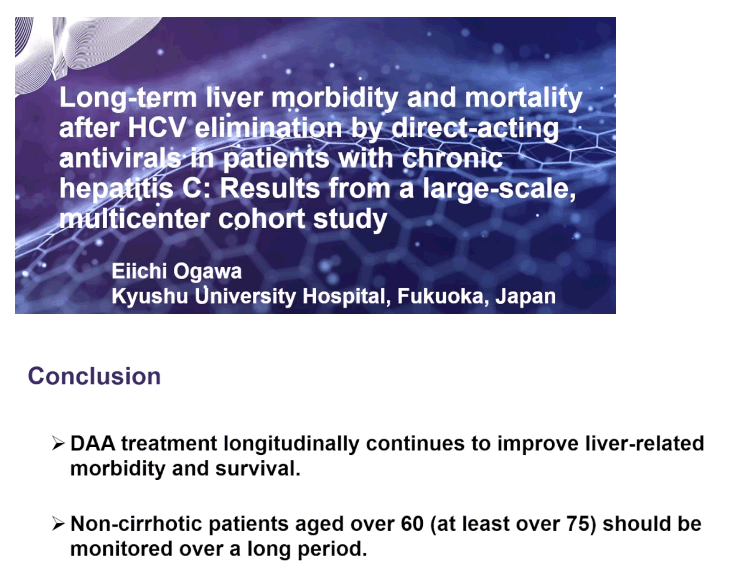

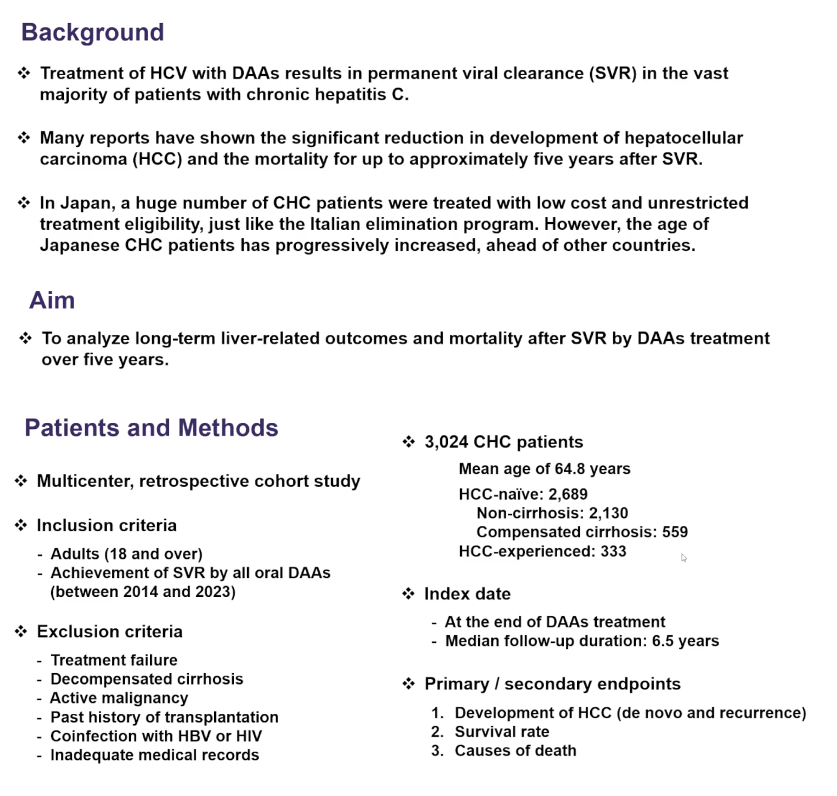
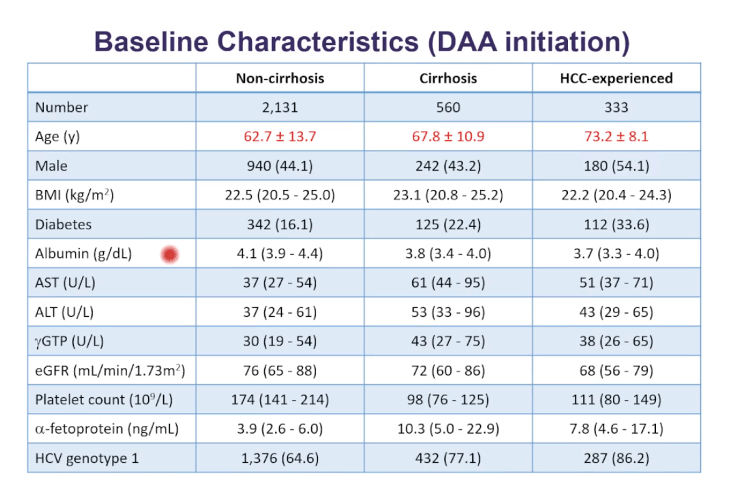
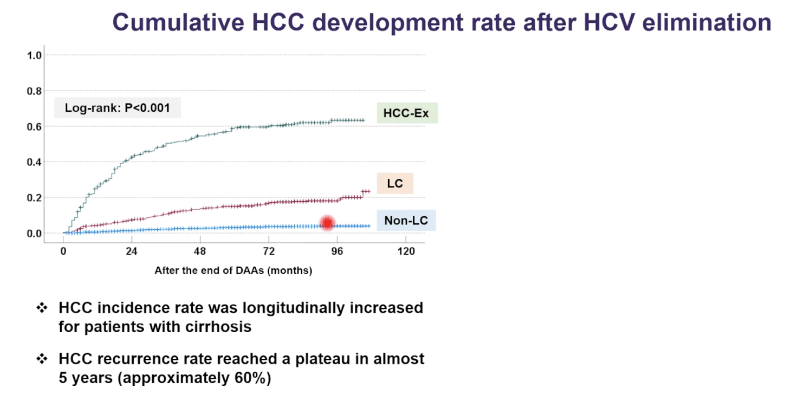
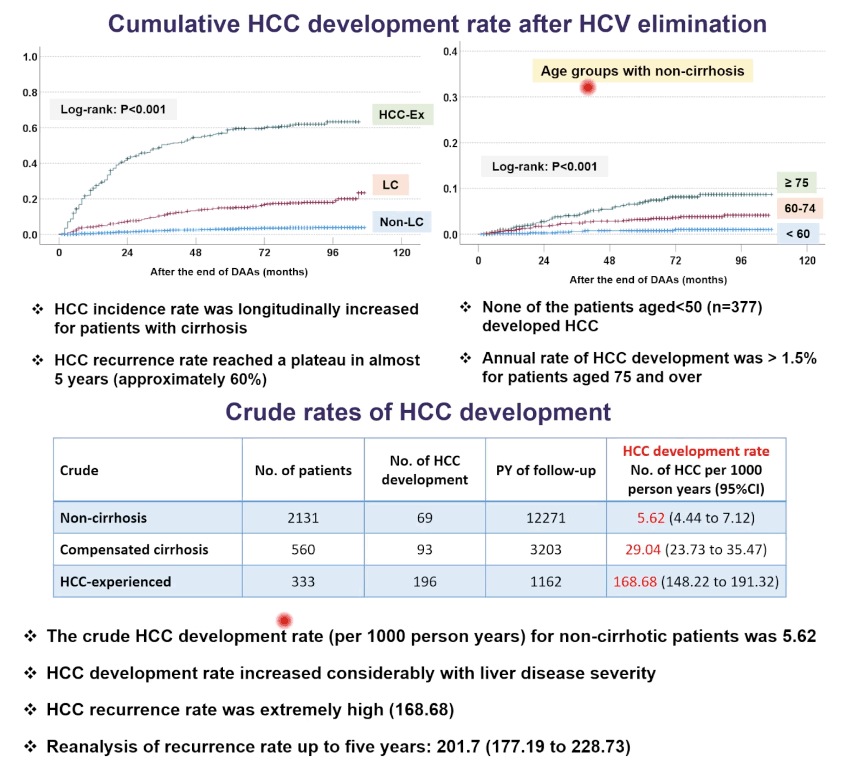
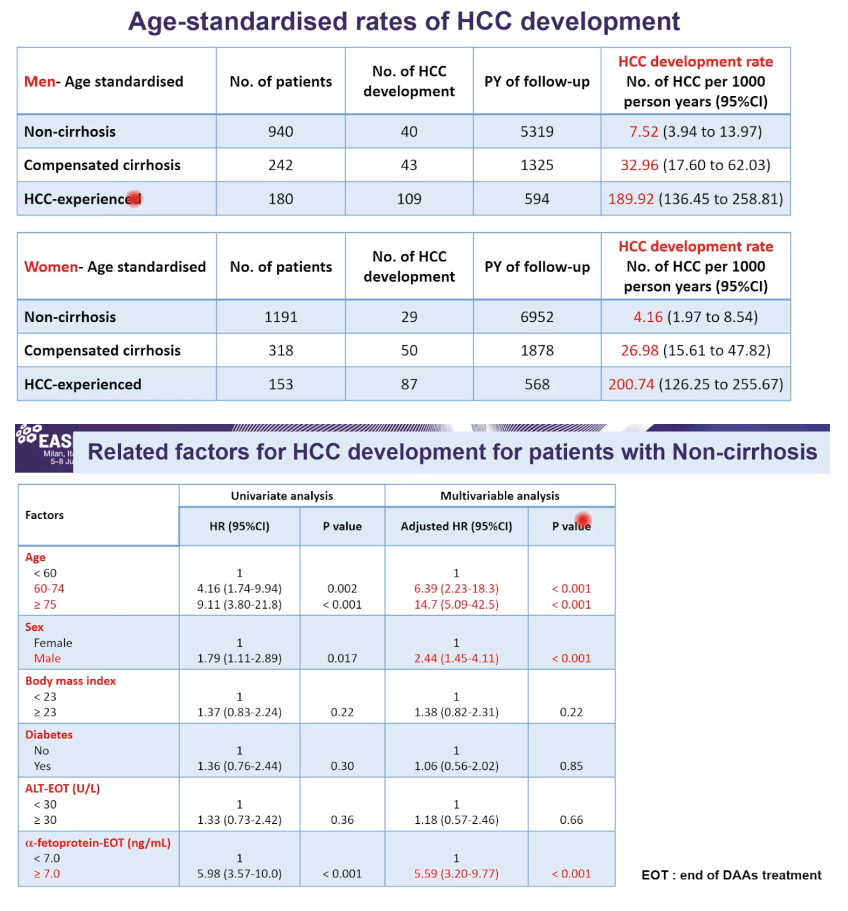
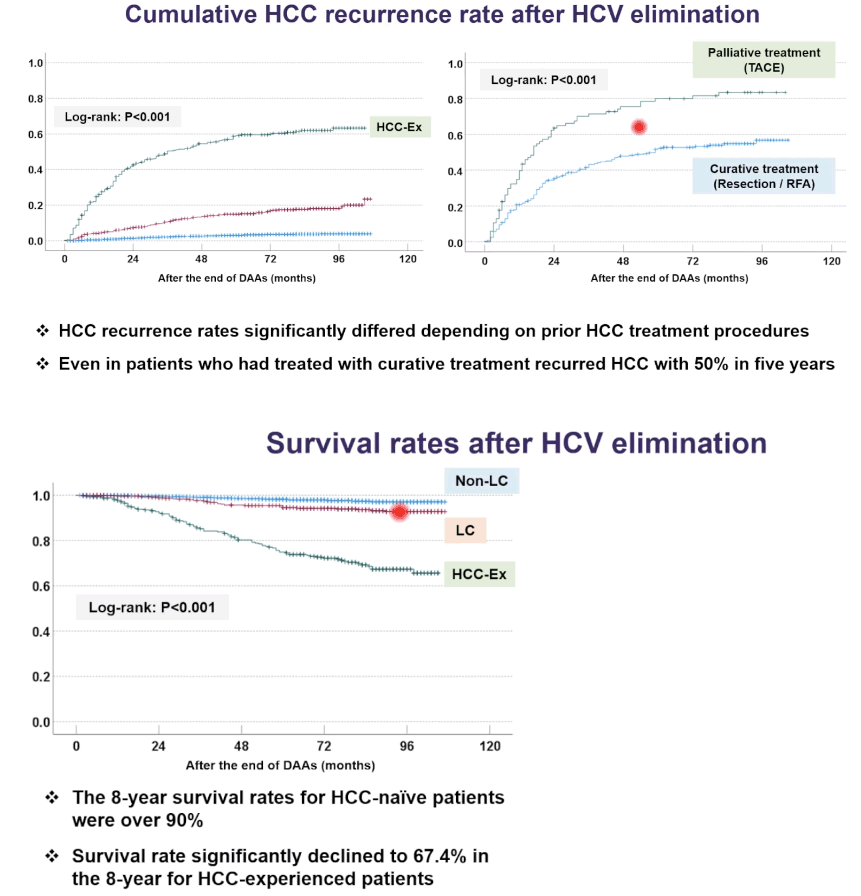
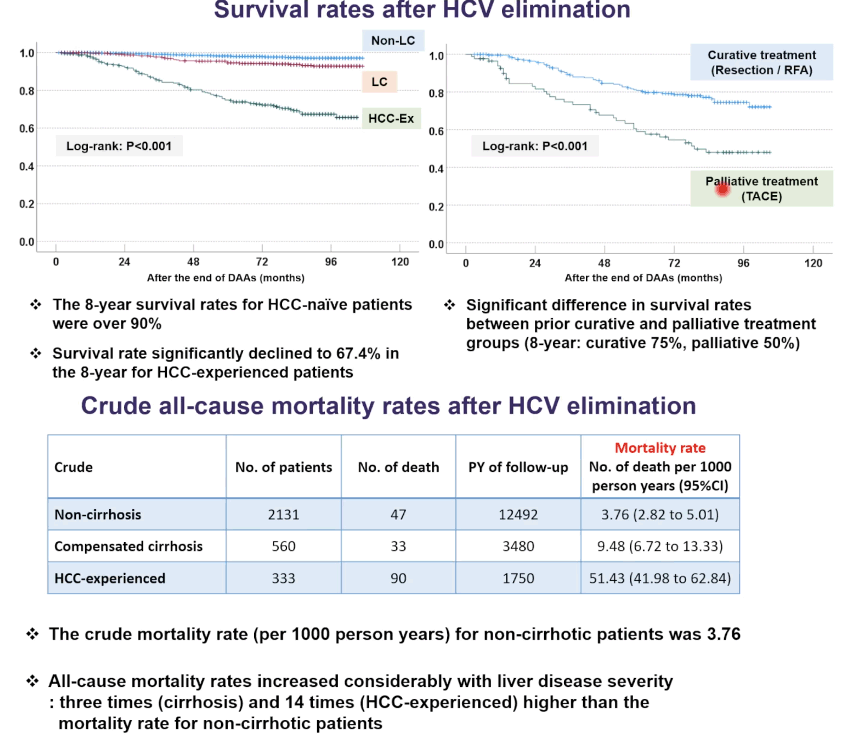
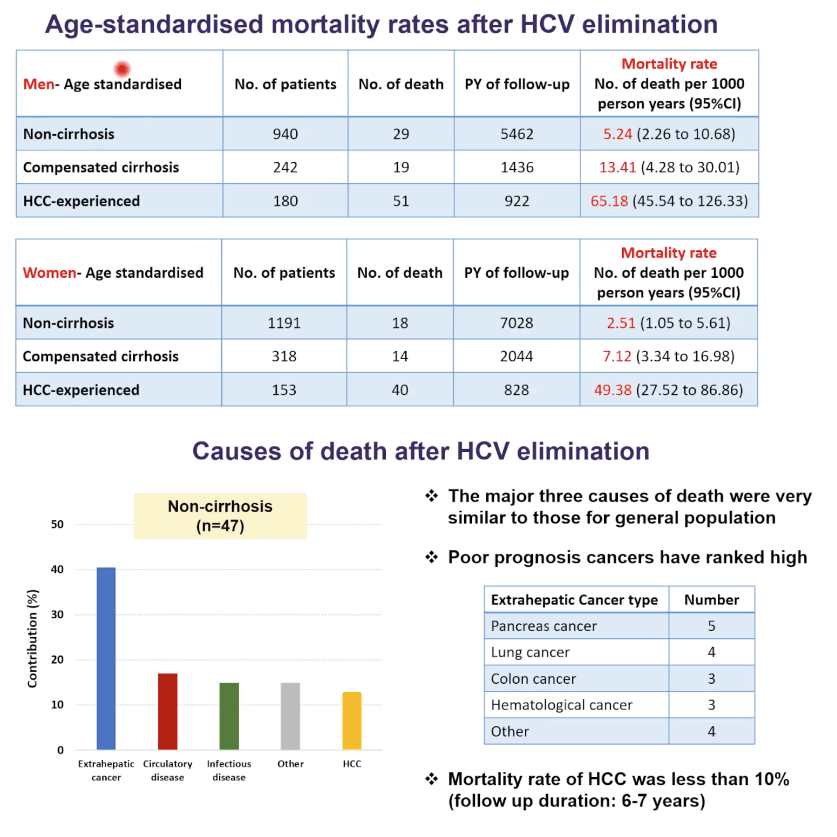

|
| |
|
 |
 |
|
|